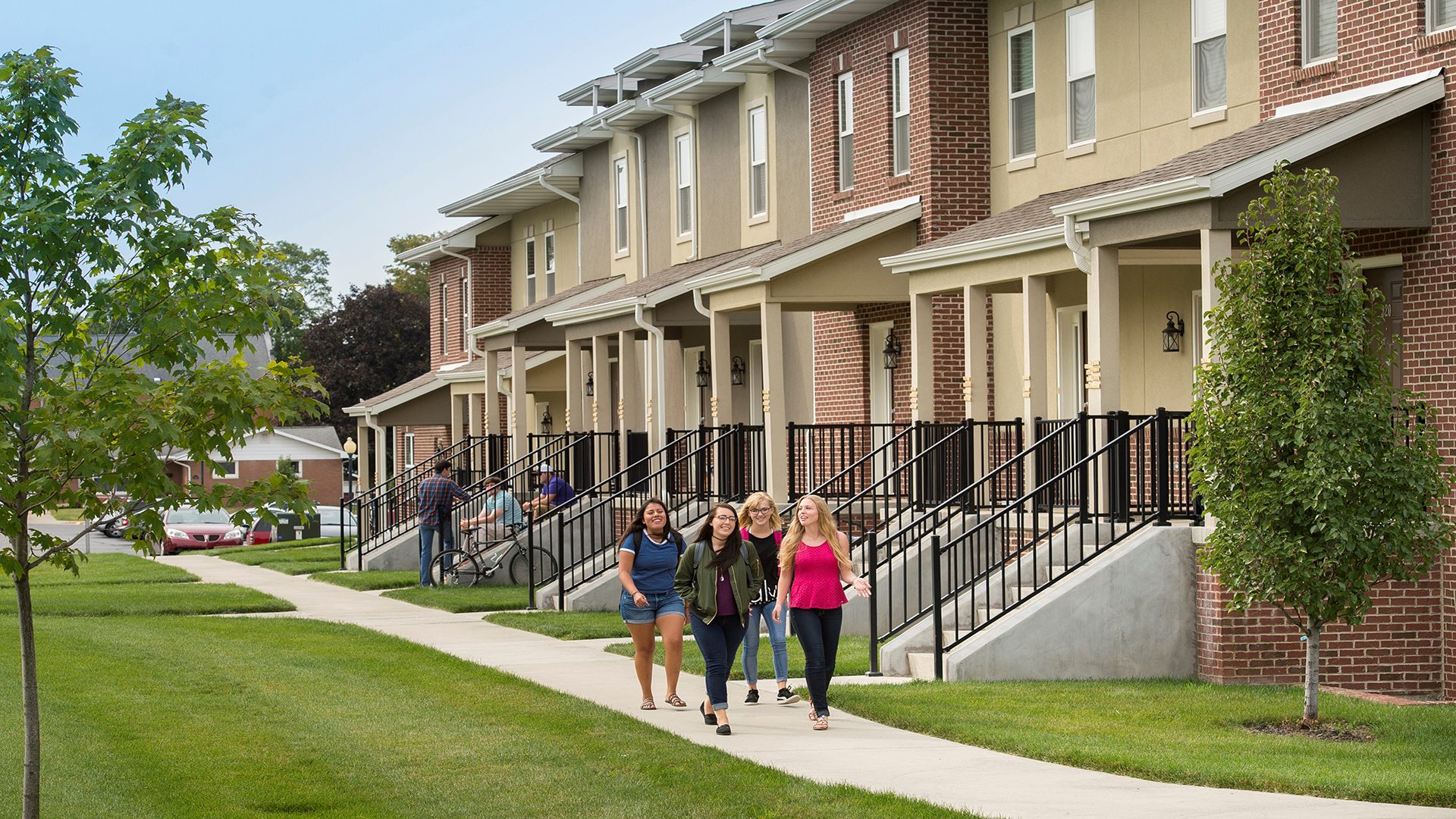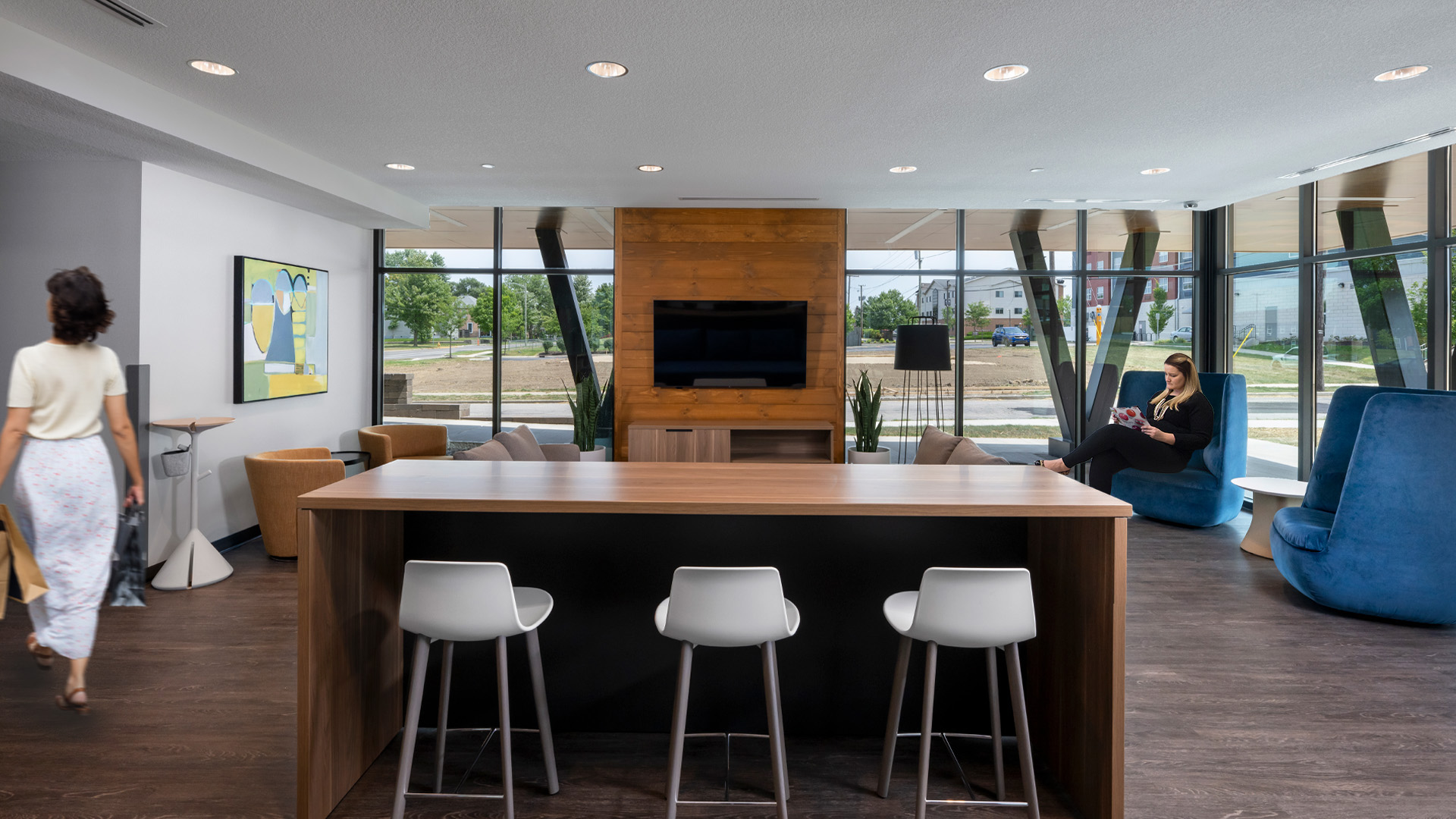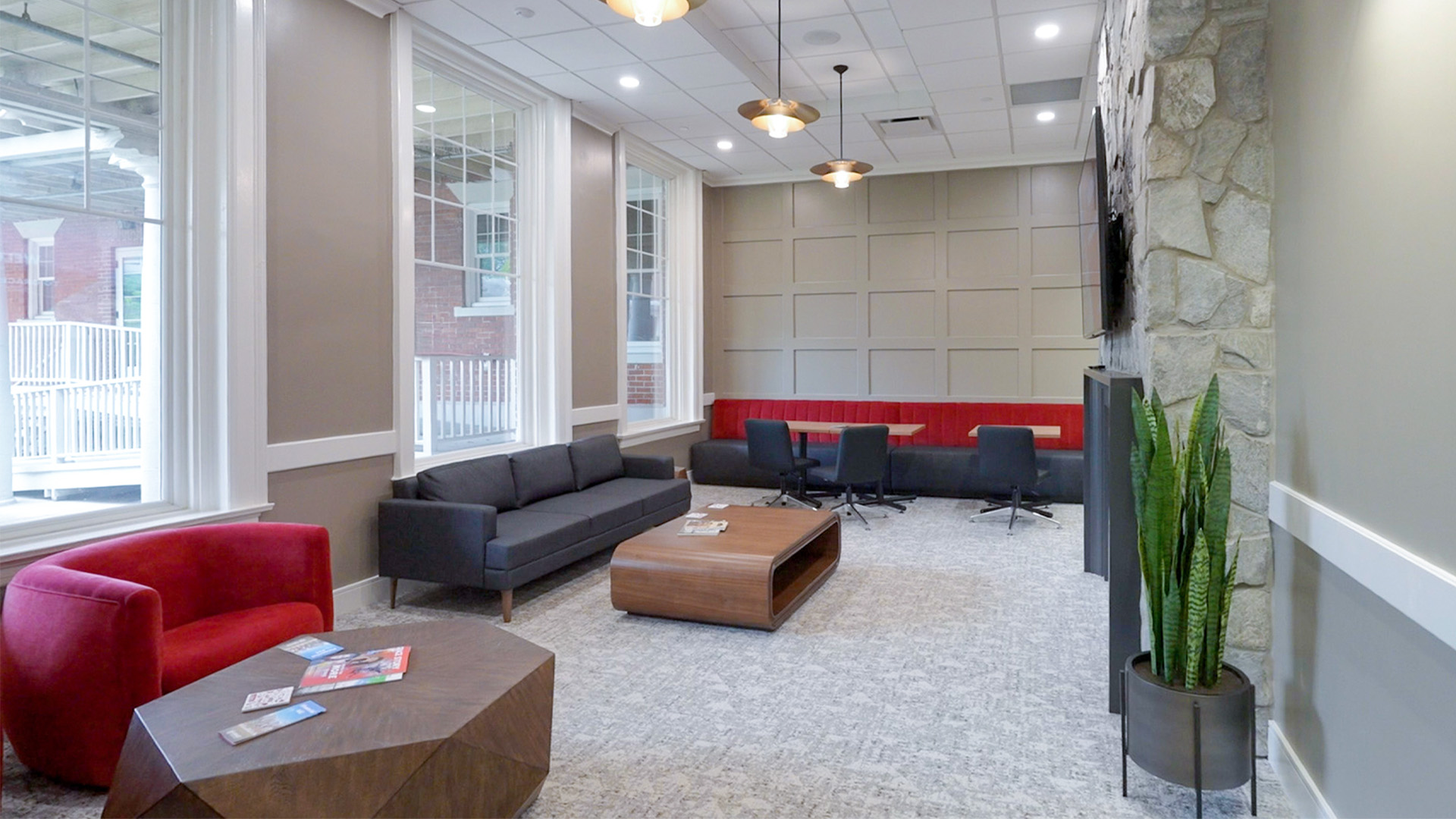Designing for Delight: Making Everyday Campus Spaces Special
By Nathan Woods, AIA, NCARB
November 5, 2025Post Tagged in
Students don’t fall in love with a campus because of a single building — they fall in love with how it feels: the rhythm of daily life, the chance encounters, the quiet moments between the big moments.As architects, engineers, and interior designers, we often spend time on the big pieces — residence halls, student centers, labs, libraries, stadiums. But when we walk a campus after the ribbon cutting, we see where students actually live — at the tables tucked just outside the dining hall or gathered around a fireplace in the corner of a commons. These are the spaces that quietly define campus life. These small spaces shape the student experience. They’re where community happens. |

|

 |
Everyday Spaces Matter MostWalk across any campus and you’ll find the energy in the in-between spaces — the corridors, lounges, courtyards, and lawns that connect the more formal destinations. These are the places that make a campus feel alive. At Indiana Tech, one of the most popular study spots for the students in a new residence hall turned out not to be a classroom or lounge at all, but a wide hallway with a countertop and a view. Students claim it because it has natural light, power outlets, and a view of city and campus life moving around them. Simple design decisions created an experience of connection and belonging — without any fanfare. You’ll see that pattern again and again. When campuses invest just a little more thought into these intentionally connective spaces, they see outsized returns in how students interact, linger, and engage. |


